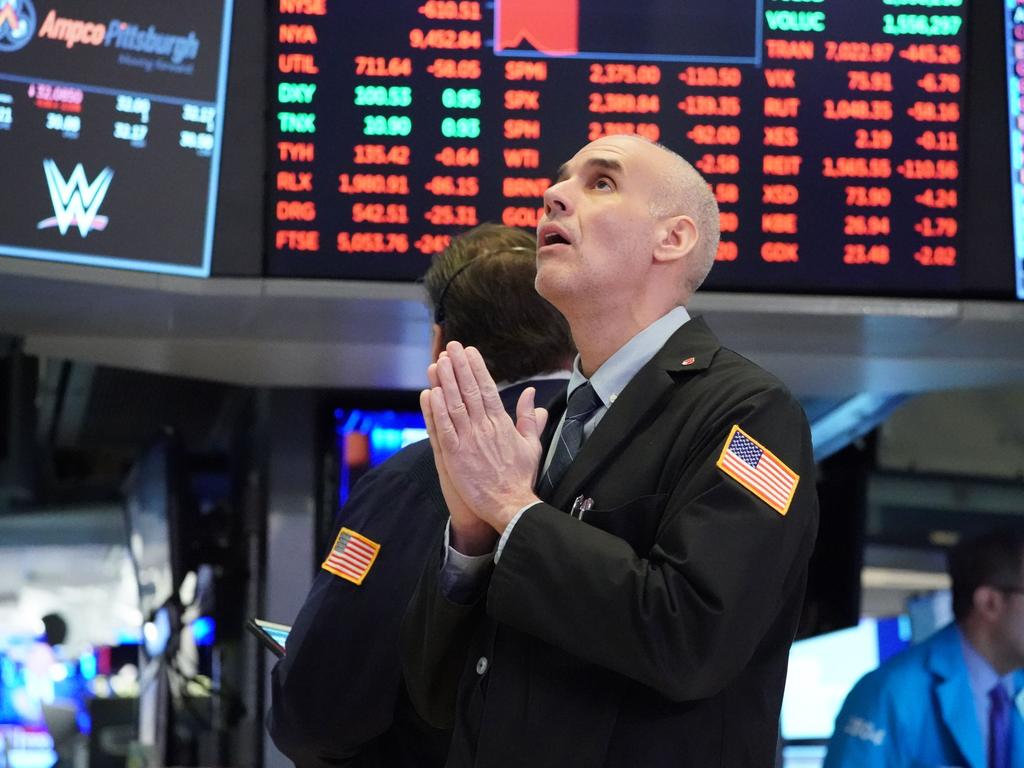
In line with recent Fed statements, BofA’s June Fund Manager Survey found that 72 per cent of fund managers thought that the spike in inflation in recent months is “transitory”.
That’s a remarkable outcome considering the ongoing shortage of semiconductors, the rapidly deteriorating cargo flows through South China (reportedly now causing a much bigger disruption than the Suez Canal blockage in March), evidence that less volatile and typically “sticky” components of US prices are rising sharply, and extreme policy stimulus now in place.
But there have been some sharp falls in inflation inputs of late.
The price of lumber has fallen 27 per cent in the past nine days – its longest losing streak since 2008 – to be down 42 per cent from an all-time high in early May, yet still up 159 per cent from 52 weeks ago.
Copper fell 4 per cent on Wednesday to be down 12 per cent from a record high in early May.
Among other key findings from BofA’s survey of 207 panellists managing $US645bn ($832bn), 68 per cent said there will be no global recession until 2024 at the earliest, and 57 per cent said that any “correction” in the sharemarket would be less than 10 per cent.
Again, that’s remarkable considering that the S&P 500 has almost doubled from its post-Covid-19 low, thanks in no small way to unprecedented monetary policy stimulus, which has now peaked. While expectations for economic growth and corporate earnings have peaked, almost half of respondents feel that the investment cycle is simply transitioning from early to mid-cycle.
In other words, they believe the current economic and earnings cycle is sustainable.
Consistent with that, the average cash level of fund managers surveyed by BofA fell to an unusually low 3.9 per cent in June, from 4.1 per cent in May.

On a contrarian basis (assuming that the market does the opposite of what the majority expect), that gives a “sell signal” for the S&P 500 with a back-tested one-month return of -3.2 per cent.
BofA’s more powerful “Bull & Bear Indicator” remained steady at 6.5 points, which is still “neutral” but close to the 8.0 level above which it would generate a sell signal, according to the US bank’s chief investment strategist, Michael Hartnett.
More broadly, he says investors are “bullishly positioned for permanent growth, transitory inflation and a peaceful Fed taper via longs in commodities, cyclicals and financials”, whereas contrarians will be taking the view that “growth is transitory and inflation is permanent”.
They would also be long bonds and emerging markets and utilities, while shorting commodities, European equities and banks, according to his reading of the survey.
The percentage of respondents expecting the combination of above-trend economic growth and above-trend (but not necessarily skyrocketing) inflation again hit new all-time highs, with 76 per cent now expecting that outcome. That would generally be good for corporate profits.
That was despite expectations of less US policy support. The survey found that 63 per cent of respondents expect the Fed to signal a plan in August or September to start tapering the pace of its asset buying – currently $US120bn a month – and their hopes of the size of US infrastructure spending dipped to $US1.7 trillion, from $US1.9 trillion.
Asked what assets will be the best performing in the next four years, respondents favoured a “barbell” of value stocks and information technology stocks.
Fund managers’ allocation to bonds hit a three-year low with a net 69 per cent now overweight, while their allocation to stocks hit a year-to-date high of 61 per cent overweight and their commodities allocation remained high, according to Mr Hartnett.
He said “long commodities” overtook long bitcoin as the “most crowded trade”, even though 81 per cent still thought bitcoin is a “bubble”, despite the recent collapse in its price.
Interestingly, while a net 75 per cent of respondents expect a stronger economy, that’s nine percentage points lower than what was a near record high the previous month.
Mr Hartnett notes that while the five episodes of “peak optimism” since 1994 were followed by a 75-basis-point drop in the 10-year Treasury yield, the “Fed policy stance is very different today”.
He says the “number one tail risks” are inflation and a “taper tantrum”.






As Fed officials met for their highly anticipated monetary policy meeting, a survey of global fund managers showed considerable complacency about inflation and the risk of a sharemarket sell-off.